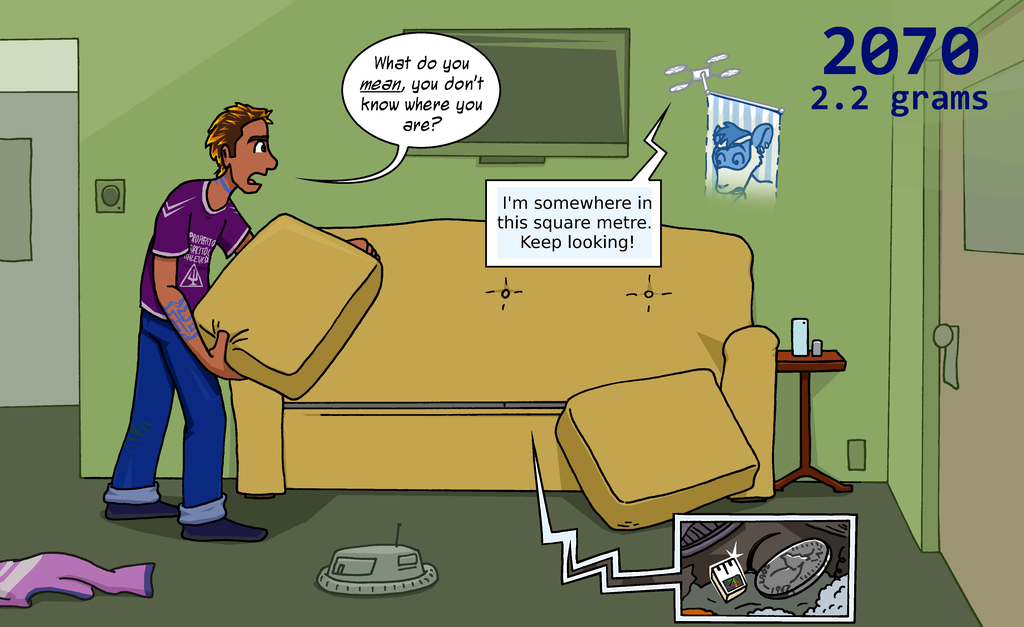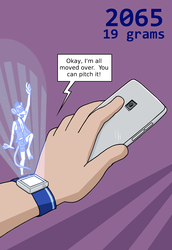Sign In
CloseHave you ever lost a microSD card containing an important piece of data? I have, and it's as annoying as all get-out. Imagine when some 'data' gets to be not just as important as 'health records', but as important as 'person'. Running everything triply-redundant to keep stray cosmic rays from flipping important bits in somebody's mind pales in comparison to the practical, physical troubles that will arise when you can fit a whole town inside a purse.
(And yes, that's a quarter celebrating Canada's bicentennial. Why wouldn't I throw in a bit of wish-fulfilment, that civil society manages to remain intact at least another half-century?)
Submission Information
- Views:
- 532
- Comments:
- 1
- Favorites:
- 4
- Rating:
- General
- Category:
- Visual / Digital





Link
Runewuff
I've not seen this kind of optimism about the future in a long time. It's refreshing! XD
My take is that there a number of problems with the idea of scanning and uploading someone's brain, but, instead of being a naysayer (I'd rather see people succeed and do well) or technophobe (I actually love new technology, and people who say it can't be done, are usually proven wrong) I can summarize them in a small number of actionable points.
Ignoring the role of glial cells. IMHO this is going to go down like that time they decided 99% of the genome was "junk DNA" and could be ignored , when ooops, that only contains the genes that switch the others on and off and are responsible for embryo development and body plan. (Yes, the brain is quite mysterious if you ignore 90% of it.) What this means is you may have to include glial cells in your brainscan.
Ignoring the role of neurochemestry AKA hormones. The brain isn't just a network of neural connections, it exists in a "soup" of hormones modifying behavior - testosterone, oxytocin, endorphins, etc. From an uploaded personality's POV, we're all on drugs! This would have to be taken into account and simulated to get emotions and "lifelike" behavior. (Whether or not this is "alive" is a whole other philosophical discussion.) This gives me the fun idea of an em having, on their end, a set of virtual sliders to adjust aggression, sexuality, and so on. (What it means for an em to shift their personality towards emotional states they find more useful/productive than the original person they are simulating, is another whole philosophical discussion.)
taking the personality from a network (the brain) and putting in a binary array (a computer) might give it more "mechanical" behavior than it had before, because of a tendency for the new hardware to flip its switches to definite on/off states, as opposed to the "maybe" humans are known for. You might need to make something with a neural structure at it's base transistor level, rather than how a computer works right now, to get truly lifelike behavior.
Quantum computing is also really good at handling indefinite states between 0 and 1. A quantum computer can do "maybe", the same as a human brain, which would make it more lifelike. It may be necessary to incorporate quantum computing (if not just put the whole uploaded personality on a pure quantum computer) to get the correct lifelike behavior.
(I wish I could shrink these to bullet points, but, they are just not simple ideas?)